
Fast-Docker
Docker容器化技术学习与实践指南
Fast-Docker是一个全面的Docker学习资源,涵盖从基础概念到高级应用。项目通过实践实验和命令指南,帮助开发者快速掌握Dockerfile、镜像、容器、Docker Compose、网络和Swarm等核心技术。内容适合各层级开发者,提供容器化解决方案的实际应用指导和最佳实践参考。
Fast-Docker
This repo aims to cover Docker details (Dockerfile, Image, Container, Commands, Volumes, Docker-Compose, Networks, Swarm, Stack) quickly, and possible example usage scenarios (HowTo: LABs) in a nutshell. Possible usage scenarios are aimed to update over time.
Keywords: Docker-Image, Dockerfile, Containerization, Docker-Compose, Docker-Volume, Docker-Network, Docker-Swarm, Service, Cheatsheet.
Quick Look (HowTo: LABs)
- LAB-01: Creating First Docker Image and Container using Docker File
- LAB-02: Binding Volume to the Different Containers
- LAB-03: Docker-Compose File - Creating 2 Different Containers: WordPress Container depends on MySql Container
- LAB-04: Creating Docker Swarm Cluster With 5 PCs using PlayWithDocker : 3 x WordPress Containers and 1 x MySql Container using Docker-Compose File
- LAB-05: Running Docker Free Local Registry, Tagging Image, Pushing Image to the Local Registry, Pulling Image From Local Registry and Deleting Images from Local Registry
- LAB-06: Transferring Content between Host PC and Docker Container
- LAB-07: Creating Docker Container using Dockerfile to Build C++ on Ubuntu18.04
- LAB-08: Creating Docker Container using Dockerfile to Build C++ on Windows
- LAB-09: Docker Configuration (Proxy, Registry)
- Docker Commands Cheatsheet
Table of Contents
- Motivation
- What is Docker?
- Architecture
- Installation
- Docker Engine (Deamon, REST API, CLI)
- Docker Registry and Docker Hub
- Docker Command Structure
- Docker Container
- Docker Volumes/Bind Mounts
- Docker Network
- Docker Log
- Docker Stats/Memory-CPU Limitations
- Docker Environment Variables
- Docker File
- Docker Image
- Docker Compose
- Docker Swarm
- Docker Stack / Docker Service
- Play With Docker
- Docker Commands Cheatsheet
- Other Useful Resources Related Docker
- References
Motivation <a name="motivation"></a>
Why should we use Docker? "Docker changed the way applications used to build and ship. It has completely revolutionized the containerization world." (Ref:ItNext)
Needs <a name="needs"></a>
- Installing all dependencies, setting up a new environment for SW (time-consuming every time to install environment for testing )
- We want to run our apps on different platforms (Ubuntu, Windows, Raspberry Pi).
- Question in our mind: What if, it does not run on a different OS?
- CI/CD Integration Testing: We can handle unit testing, component testing with Jenkins. What if integration testing?
- Extending Chain: Jenkins- Docker Image - Docker Container - Automatic testing
- Are our SW products portable to carry on different PC easily? (especially in the development & testing phase)
- Developing, testing, maintenance of code as one Monolithic App could be problematic when the app needs more features/services. It is required to convert one big monolithic app into microservices.
Benefits <a name="benefits"></a>
- NOT needed to install dependencies/SWs again & again
- Enables to run on different OS, different platforms
- Enables a consistent environment
- Enables more efficient use of system resources
- Easy to use and maintain
- Efficient use of the system resources
- Isolate SW components
- Enables faster software delivery cycles
- Containers give us instant application portability.
- Enables developers to easily pack, ship, and run any application as a lightweight, portable, self-sufficient container
- Microservice Architecture (Monolithic Apps to MicroService Architecture, e.g. Cloud Native App)
(Ref: Infoworld)
Problems Docker does not solve<a name="problems"></a>
- Docker does NOT fix your security issues
- Docker does NOT turn applications magically into microservices
- Docker isn’t a substitute for virtual machines
(Ref: Infoworld)
What is Docker? <a name="whatisdocker"></a>
- Docker is a tool that reduces the gap between the Development/Deployment phase of a software development cycle.
- Docker is like a VM but it has more features than VMs (no kernel, only small app and file systems, portable)
- On Linux Kernel (2000s) two features are added (these features support Docker):
- Namespaces: Isolate process.
- Control Groups: Resource usage (CPU, Memory) isolation and limitation for each process.
- On Linux Kernel (2000s) two features are added (these features support Docker):
- Without Docker, each VM consumes 30% of resources (Memory, CPU)
 (Ref: Docker.com)
(Ref: Docker.com)
Architecture <a name="architecture"></a>
 (Ref: docs.docker.com)
(Ref: docs.docker.com)
Installation <a name="installation"></a>
- Linux: Docker Engine
- Windows: Docker Desktop for Windows
- WSL: Windows Subsystem for Linux,
- WSL2: virtualization through a highly optimized subset of Hyper-V to run the kernel and distributions, better than WLS.
- Mac-OS: Docker Desktop for Mac
Docker Engine (Deamon, REST API, CLI) <a name="engine"></a>
- There are mainly 3 components in the Docker Engine:
- Server is the docker daemon named docker daemon. Creates and manages docker images, containers, networks, etc.
- Rest API instructs docker daemon what to do.
- Command Line Interface (CLI) is the client used to enter docker commands.
 (Ref: Docker.com)
(Ref: Docker.com)
Docker Registry and Docker Hub <a name="registry"></a>
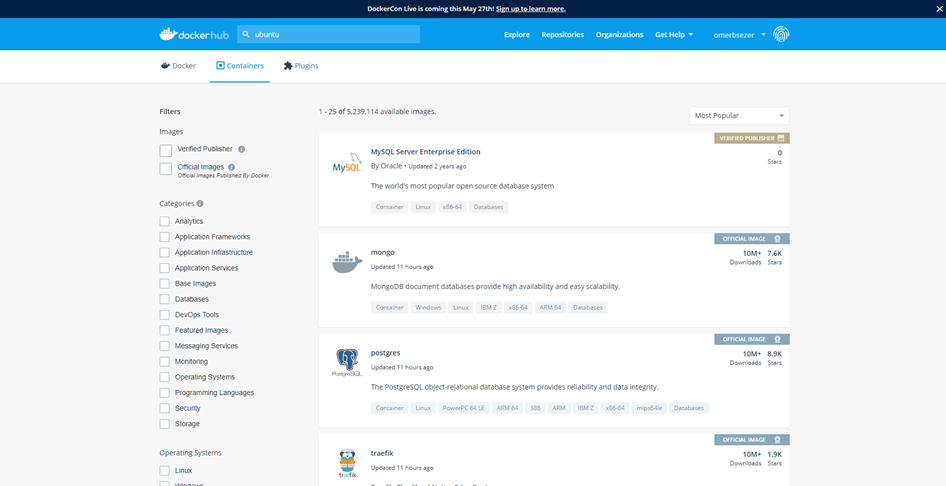
Docker Command Structure <a name="command"></a>
- docker [ManagementCommand] [Command]
docker container ls -a
docker image ls
docker volume ls
docker network ls
docker container rm -f [containerName or containerID]
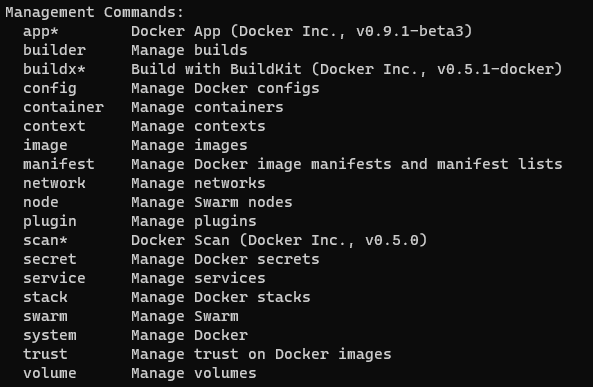
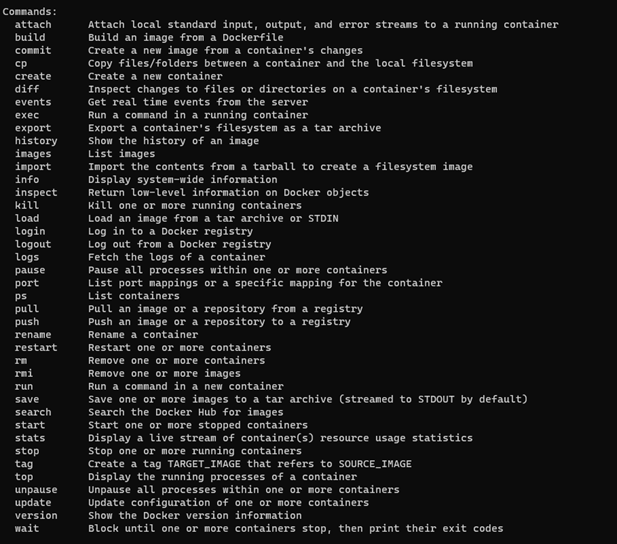
Docker Container <a name="container"></a>
 (Ref: docker-handbook-borosan)
(Ref: docker-handbook-borosan)
- When we create the container from the image, in every container, there is an application that is set to run by default app.
- When this app runs, the container runs.
- When this default app finishes/stops, the container stops.
- There could be more than one app in docker image (such as: sh, ls, basic commands)
- When the Docker container is started, it is allowed that a single application is configured to run automatically.
docker container run --name mywebserver -d -p 80:80 -v test:/usr/share/nginx/html nginx
docker container ls -a
docker image pull alpine
docker image push alpine
docker image build -t hello . (run this command where “Dockerfile” is)
(PS: image file name MUST be “Dockerfile”, no extension)
docker save -o hello.tar test/hello
docker load -i <path to docker image tar file>
docker load -i .\hello.tar
Goto: App: Creating First Docker Image and Container using Docker File
Docker Container: Life Cycle
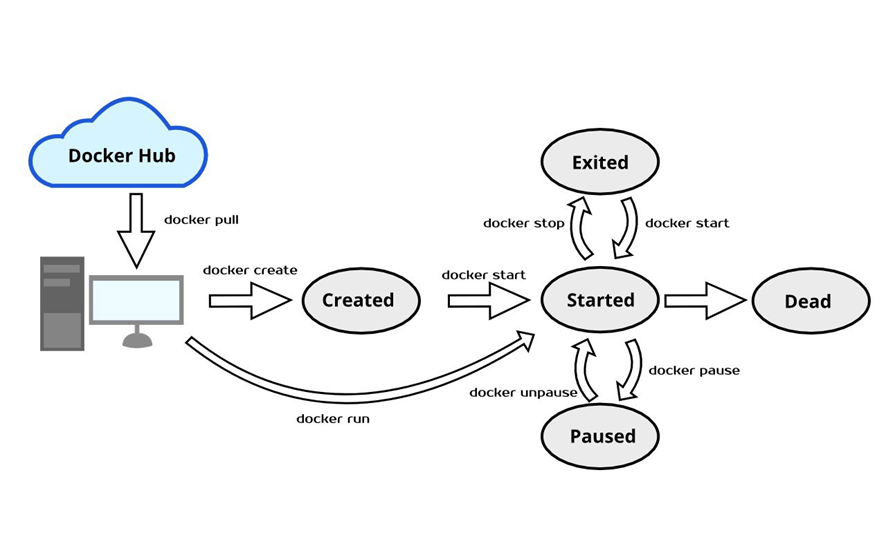 (Ref: life-cycle-medium)
(Ref: life-cycle-medium)
e.g. [imageName]=alpine, busybox, nginx, ubuntu, etc.
docker image pull [imageName]
docker container run [imageName]
docker container start [containerId or containerName]
docker container stop [containerId or containerName]
docker container pause [containerId or containerName]
docker container unpause [containerId or containerName]
Docker Container: Union File System <a name="container-filesystem"></a>
- Images are read only (R/O).
- When containers are created, new read-write (R/W) thin layer is created.
 (Ref: docs.docker.com)
(Ref: docs.docker.com)
Docker Volumes: Why Volumes needed?
- Containers do not save the changes/logs when erased if there is not any binding to volume/mount.
- For persistence, volumes/mounts MUST be used.
- e.g. Creating a log file in the container. When the container is deleted, the log file also deleted with the container. So volumes/binding mounts MUST be used to provide persistence!
 (Ref: udemy-course:adan-zye-docker)
(Ref: udemy-course:adan-zye-docker)
Docker Volumes/Bind Mounts <a name="volume"></a>
- Volumes and binding mounts must be used for saving logs, output files, and input files.
- When volumes bind to the directory in the container, this directory and volume are synchronized.
docker volume create [volumeName]
docker volume create test
docker container run --name [containerName] -v [volumeName]:[pathInContainer] [imageName]
docker container run --name c1 -v test:/app alpine
Goto: App: Binding Volume to the Different Containers
Bind Mount
docker container run --name [containerName] -v [pathInHost]:[pathInContainer] [imageName]
docker container run --name c1 -v C:\test:/app alpine
 (Ref: Docker.com)
(Ref: Docker.com)
Goto: App: Binding Mount to Container Goto: App: Transferring Content between Host PC and Docker Container
Docker Network <a name="network"></a>
- Docker containers work like VMs.
- Every Docker container has network connections
- Docker Network Drivers:
- None
- Bridge
- Host
- Macvlan
- Overlay
Docker Network: Bridge
- Default Network Driver: Bridge (--net bridge)
docker network create [networkName]
docker network create bridge1
docker container run --name [containerName] --net [networkName] [imageName]
docker container run --name c1 --net bridge1 alpine sh
docker network inspect bridge1
docker container run --name c2 --net bridge1 alpine sh
docker network connect bridge1 c2
docker network inspect bridge1
docker network disconnect bridge1 c2
- Creating a new network using customized network parameters:
docker network create --driver=bridge --subnet=10.10.0.0/16 --ip-range=10.10.10.0/24 --gateway=10.10.10.10 newbridge
 (Ref: Docker.com)
(Ref: Docker.com)
Docker Network: Host
- Containers reach host network interfaces (--net host)
docker container run --name [containerName] --net [networkName] [imageName]
docker container run --name c1 --net host alpine sh
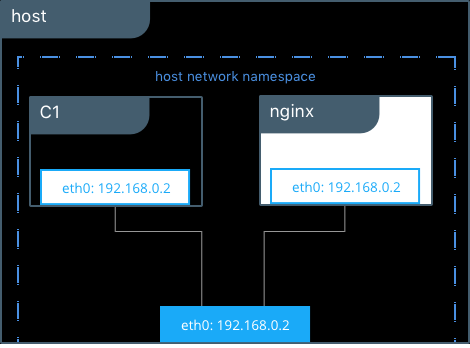 (Ref: Docker.com)
(Ref: Docker.com)
Docker Network: MacVlan
- Each Container has its own MAC interface (--net macvlan)
 (Ref: Docker.com)
(Ref: Docker.com)
Docker Network: Overlay
- Containers that work on different PCs/hosts can work as the same network (--net overlay)
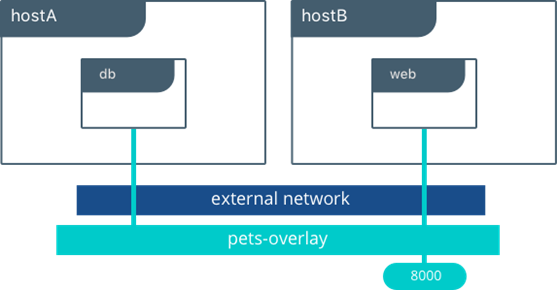 (Ref: Docker.com)
(Ref: Docker.com)
Port Mapping/Publish:
- Mapping Host PC's port to container port:
-p [hostPort]:[containerPort], --publish [hostPort]:[containerPort] e.g. -p 8080:80, -p 80:80
docker container run --name mywebserver -d -p 80:80 nginx
Docker Log <a name="log"></a>
- Docker Logs show /dev/stdout, /dev/stderror
docker logs --details [containerName]
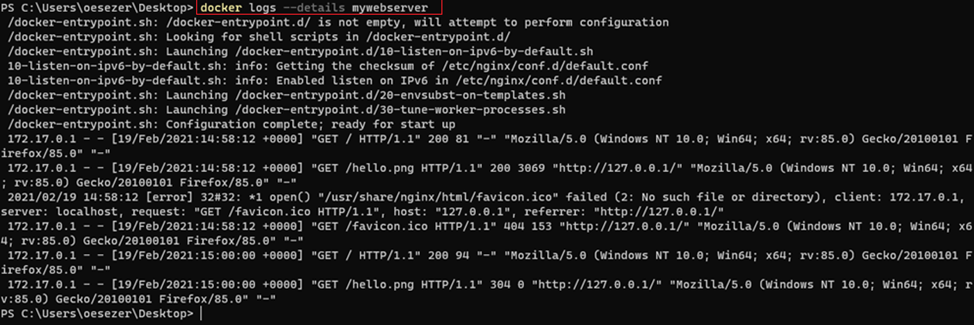
Docker Stats/Memory-CPU Limitations <a name="stats"></a>



Docker Environment Variables <a name="variables"></a>
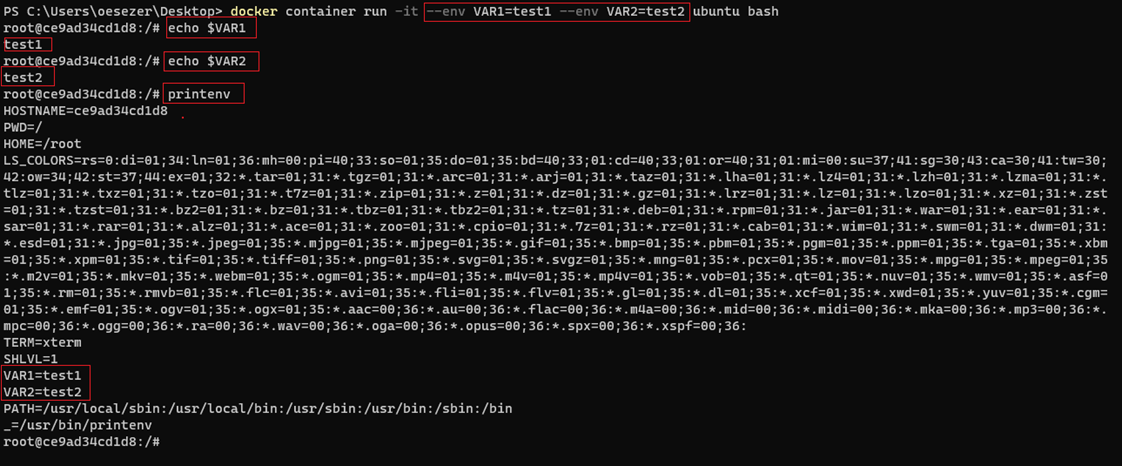
Docker File <a name="file"></a>
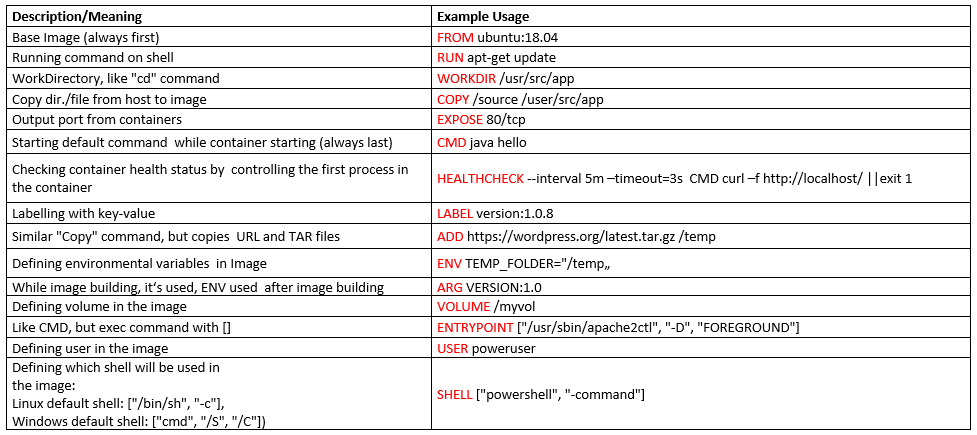
Goto: [App: Creating Docker Container using Dockerfile to Build C++ on
编辑推荐精选


TRAE编程
AI辅助编程,代码自动修复
Trae是一种自适应的集成开发环境(IDE),通过自动化和多元协作改变开发流程。利用Trae,团队能够更快速、精确地编写和部署代码,从而提高编程效率和项目交付速度。Trae具备上下文感知和代码自动完成功能,是提升开发效率的理想工具。


博思AIPPT
AI一键生成PPT,就用博思AIPPT!
博思AIPPT,新一代的AI生成PPT平台,支持智能生成PPT、AI美化PPT、文本&链接生成PPT、导入Word/PDF/Markdown文档生成PPT等,内置海量精美PPT模板,涵盖商务、教育、科技等不同风格,同时针对每个页面提供多种版式,一键自适应切换,完美适配各种办公场景。


潮际好麦
AI赋能电商视觉革命,一站式智能商拍平台
潮际好麦深耕服装行业,是国内AI试衣效果最好的软件。使用先进AIGC能力为电商卖家批量提供优质的、低成本的商拍图。合作品牌有Shein、Lazada��、安踏、百丽等65个国内外头部品牌,以及国内10万+淘宝、天猫、京东等主流平台的品牌商家,为卖家节省将近85%的出图成本,提升约3倍出图效率,让品牌能够快速上架。


iTerms
企业专属的AI法律顾问
iTerms是法大大集团旗下法律子品牌,基于最先进的大语言模型(LLM)、专业的法律知识库和强大的智能体架构,帮助企业扫清合规障碍,筑牢风控防线,成为您企业专属的AI法律顾问。


SimilarWeb流量提升
稳定高效的流量提升解决方案,助力品牌曝光
稳定高效的流量提升解决方案,助力品牌曝光


Sora2视频免费生成
最新版Sora2模型免费使用,一键生成无水印视频
最新版Sora2模型免费使用,一键生成无水印视频


Transly
实时语音翻译/同声传译工具
Transly是一个多场景的AI大语言模型驱动的同声传译、专业翻译助手,它拥有超精准的音频识别翻译能力,几乎零延迟的使用体验和支持多国语言可以让你带它走遍全球,无论你是留学生、商务人士、韩剧美剧爱好者,还是出国游玩、多国会议、跨国追星等等,都可以满足你所有需要同传的场景需求,线上线下通用,扫除语言障碍,让全世界的语言交流不再有国界。


讯飞绘文
选题、配图、成文,一站式创作,让内容运营更高效
讯飞绘文,一个AI集成平台,支持写作、选题、配图、排版和发布。高效生成适用于各类媒体的定制内容,加速品牌传播,提升内容营销效果。


商汤小浣熊
最强AI数据分析助手
小浣熊家族Raccoon,您的AI智能助手,致力于通过先进的人工智能技术,为用户提供高效、便捷的智能服务。无论是日常咨询还是专业问题解答,小浣熊都能以快速、准确的响应满足您的需求,让您的生活更加智能便捷。


imini AI
像人一样思考的AI智能体
imini 是一款超级AI智能体,能根据人类指令,自主思考、自主完成、并且交付结果的AI智能体。
推荐工具精选
AI云服务特惠
懂AI专属折扣关注微信公众号
最新AI工具、AI资讯
独家AI资源、AI项目落地

微信扫一扫关注公众号



